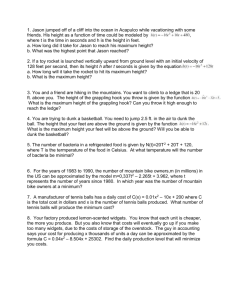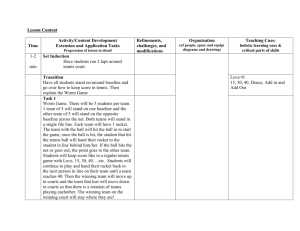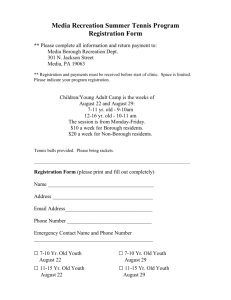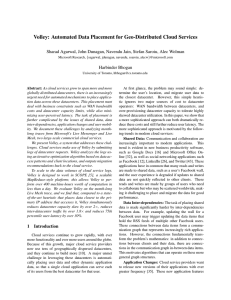Packaging Tennis Balls Part 1
advertisement
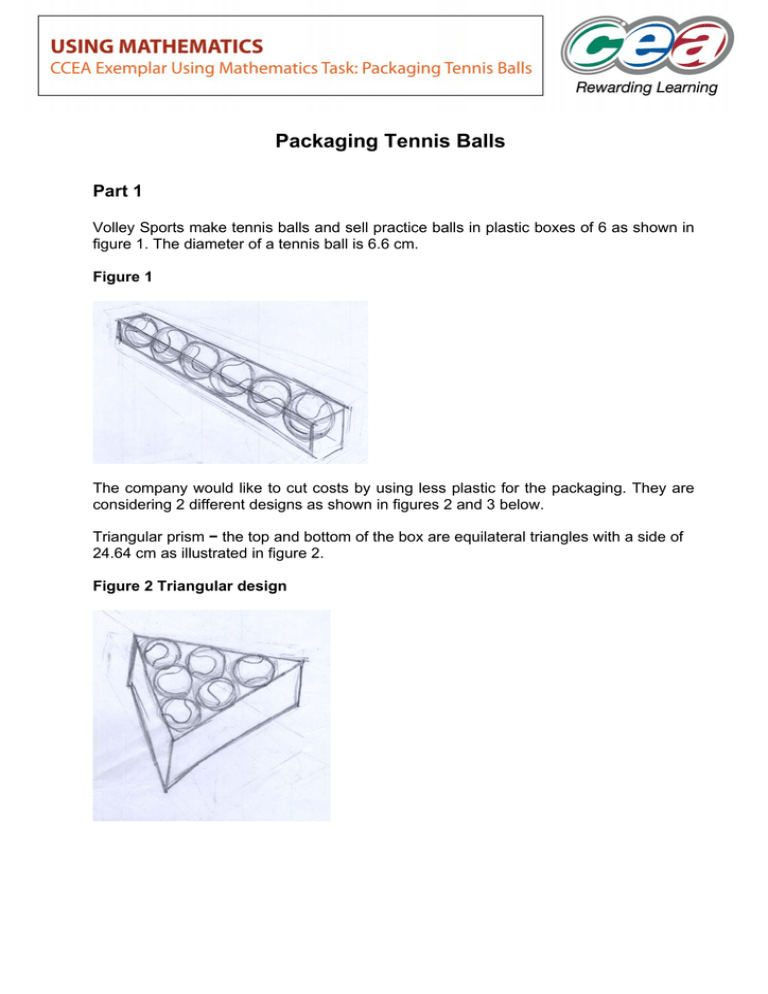
Packaging Tennis Balls Part 1 Volley Sports make tennis balls and sell practice balls in plastic boxes of 6 as shown in figure 1. The diameter of a tennis ball is 6.6 cm. Figure 1 The company would like to cut costs by using less plastic for the packaging. They are considering 2 different designs as shown in figures 2 and 3 below. Triangular prism − the top and bottom of the box are equilateral triangles with a side of 24.64 cm as illustrated in figure 2. Figure 2 Triangular design Figure 3 Cylinder design The diameter of a tennis ball is 6.6 cm and in each case the tennis balls are packed tightly. If the amount of packaging is not reduced by at least 25%, Volley Sports will keep to the original packaging. Use this information to find which of the 3 designs Volley Sports should use. Show all the calculations you have used to justify the decision. Part 2 Volley Sports have started to make Matchplay tennis balls for use in tournaments. These are of higher quality than the practice balls so to keep them in top condition they need to be packaged tightly in metal containers with as little air as possible. This means that for packaging the Matchplay balls, Volley Sports are not concerned about the area of metal used but want the volume of air in the container to be as small as possible. Two possible designs are being considered. These are shown in figures 4 and 5 below. Figure 4 Cylinder Figure 5 Curved Shape Metal for packaging comes in two thicknesses − 0.3 mm and 0.25 mm. The 0.25 mm thick metal costs £1.20 per sheet, which is 17% less than the price of 0.3 mm thick metal. Volley sports would prefer to use the thicker metal as it would keep the tennis balls in better condition but do not want to spend more than £1.50 per sheet. Can they afford to buy the thicker metal? Remember to show all your working out!




